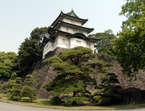herwin
Posts: 6059
Joined: 5/28/2004
From: Sunderland, UK
Status: offline

|
quote:
ORIGINAL: Barb
Just a question: It seems that Japs players are quite ignoring one good Landing beach - Lamon Bay. With fighters based at Aparri you should have it covered by CAP umbrella. It was also the main landing site of 16th Division (I think one regiment was sent to Legaspi, to advance northward to manila, the other two landed at Lamon Bay). What are Lamon Bay parameters as base?
Another think I dont like is that Japs in the first turn are using their "mach-speed" task forces and allied "surprise" to avoid allied air response. This is quite unrealistic. Japs dindt know they will "massacre" allied planes at Clark Field or in the Borneo, Mindanao and other places. So all those landings were scheduled to happen later on, when the air supperiority is achieved. It could be more historicaly realistic if allied "surprise" off (and CAP settings could be reduced maybe?). For example what if fog was not over the Formosa and Japs will get over Clark field while US CAP was there (and not just landed as happened).
But I think this could be more a PBEM House rule than AE thing.
Two questions:
1. Baguio Pass?
2. Would it be hard to mod the stock scenario to create an alternative world that allows the Japanese player to play a limited war scenario. In standard WiTP terms, this simply consists of replacing Yamamoto with Yonai and moving TFs 3501 and 3502 to Kure, Truk, or Palau, with first turn destination a position within air attack range of Manila and Clark Field. The scenario changes are:
History: After months of steadily worsening relations and the recent American Government decision to confiscate the assets of people of Japanese ancestry, the Japanese Government has taken the step of declaring war on the United States and the British Commonwealth. During this period, an internal debate took place in the Japanese military that resulted in the resignation of Admiral Yamamoto as commander of the Combined Fleet and his replacement with Admiral Yonai. Despite this change of leadership, the Navy remains committed to a surprise attack at the outbreak of war.
Victory Conditions: If the Allied player has a sea line of communications (a continuous path with air superiority) between North America and a fleet base in the Philippines or Taiwan and from there to a forward base in the Ryukyus, Korea, or Japan by 31 January 1944, he wins a decisive victory. If this requirement is met by 30 April 1944, it is a regular Allied victory. By 31 July 1944, a marginal victory, by 31 October 1944, a draw, by 31 January 1945, a Japanese marginal victory, by 30 April 1945, a Japanese regular victory, and by 31 July 1945 or later, a decisive Japanese victory.
If at any time, the Japanese player attacks forces present in a hex in Alaska, the Hawaiian Islands (excluding Midway), or continental North America, the Allied player has an additional two years (just so) to meet his requirements for a victory. Note that raiding the American sea lines of communication is allowed.
Armistices can be offered by either side at any time. The side offering the armistice must abide by it once accepted. The other side can withdraw from the agreement with 90 days notice. If Japan takes Calcutta, Delhi, Bombay, or Karachi, the Indian Congress Party forces the British in India to offer an armistice on the current lines of contact. If accepted, this means no offensive operations by either side in India, Burma, or Ceylon. If the Chinese capital is taken or Japan accepts this forced armistice with the British, the Chinese offer a similar armistice.
These changes (other than the starting location and commander changes) do not need to be enforced by the game engine--they're basically mandated house rules.
_____________________________
Harry Erwin "For a number to make sense in the game, someone has to calibrate it and program code. There are too many significant numbers that behave non-linearly to expect that. It's just a game. Enjoy it." herwin@btinternet.com |
 Printable Version
Printable Version














 )
) 










 New Messages
New Messages No New Messages
No New Messages Hot Topic w/ New Messages
Hot Topic w/ New Messages Hot Topic w/o New Messages
Hot Topic w/o New Messages Locked w/ New Messages
Locked w/ New Messages Locked w/o New Messages
Locked w/o New Messages Post New Thread
Post New Thread